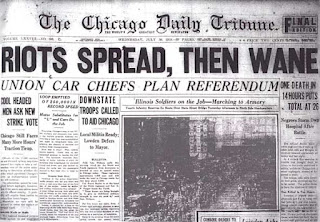Sociology and its near kin have adopted an understanding of theoretical explanation that privileges "third-person" explanations and, in particular, have decided that the best explanation is a "causal" third-person explanation, in which we attribute causal power to something other than flesh-and-blood individuals. (kl 75)His own approach is anti-cartesian -- explanans and explanandum are on the same level.
The main argument of this book may be succinctly put as follows: the social sciences (in part, but in large part) explain what people do, and they explain what it means to carry out such an explanation. (kl 14)Rather than drawing on examples from the law-based natural sciences, he prefers to understand actors in their own terms, and he offers the example of three antecedent theories:
But there are alternatives. I trace three, all of which dissented from the Cartesian dualism underlying the Durkheimian approach. These are the Russian activity school (with Vygotsky the prime example), the German Gestalt school (with Kohler the prime example), and the American pragmatist school (with Dewey the prime example). All point to a serious social science that attempts to understand why people do what they do, a science that while rigorous and selective (as opposed to needing to "examine everything") is not analytic in the technical sense of decomposing unit acts into potentially independent (if empirically interrelated) components. (kl 147)I like Levi Martin's work quite a bit, and wrote earlier on his approach to social structures in his Social Structures
First, his account leaves out a vast proportion of what many social scientists are interested in explaining -- why did fascism prevail in Germany and Italy, why were East Coast dock worker unions corrupt while West Coast dock workers were political, why do young democracies fall prey to far-right nationalist movements, why did the decision-making process surrounding the launch of Space Shuttle Challenger go so disastrously wrong? These Why questions involve understanding the workings of institutions and structures, and they admit of causal explanations. And they are not inherently equivalent to explanations of nested sets of social actions.
Second, L-M's polemic against current ideas of social explanation assumes there are only two choices in play: correlational studies of associated variables and actor-level explanations of why people behave as they do. But this is incorrect. The new institutionalism in sociology, for example, explains outcomes as the result of a socially embedded system of rules that produce a characteristic set of actions on the part of participants. Institutional differences across settings lead to significantly different outcomes. And the causal-mechanisms approach to explanation (Tilly) identifies meso-level social mechanisms that can be seen to aggregate into identifiable social processes. L-M's polemic against "causalism" is, in my perception, directed against an untenable regularity-based theory of causation; but the causal-mechanism approach provides a far more defensible theory of social causation and explanation.
Third, his current account is mono-thematic: the only thing that counts is what is in the head of the participant. But this seems wrong in two ways: first, we are often interested in social facts that are not social actions in Weber's sense. And second, sometimes factors that the individuals themselves have not conceptualized are critical to understanding what is going on.
I also find that Levi Martin gives the causal mechanisms approach a wholly unfair dismissal. The CM approach is actually an alternative way of disaggregating social explanations and de-dramatizing the quest for unifying theories of the social world. The CM approach brings forward a heterogeneous view of the workings of a social world that is itself heterogeneous and multi-factoral. It is a mid-level theory of explanation, not a generalization-worshipping theory of explanation. So I believe that much of what Levi says in favor of his own approach can be said with equal force about the CM theory.
Moreover, CM theory too is an actor-centered approach to social explanation. The mechanisms to which sociologists in this tradition appeal work through the choices and actions of individuals. But CM also recognizes that there are relatively stable structures and relations that influence individual action and that have consequences for yet other meso-level factors. The CM approach asks a great fundamental question: through what processes and mechanisms did the social phenomenon in question take place? And crucially, there is no reason to expect the participants to conceptualize or understand these mechanisms and institutions. So there is a proper place for the hypotheses and constructs of the observer and theoretician after all.
One way to put these criticisms is to suggest that the book is mis-titled. The title offers a comprehensive theory of social explanation, but it doesn't in fact succeed in providing any such thing. And it gives the impression that there is only one legitimate mode of social explanation -- something that most sociologists would reject for good reasons.
In fact, the book is not so much a theory of explanation as it is a theory of the actor: what she knows, what she wants, how she chooses, and how she acts. It is a theory that draws upon American pragmatism and phenomenology. And the implication for "explanation" is a very simple lemma: "Explanations of social actions need to be couched in terms of the real experiences and cognitive-practical setup of the actors." Here is the title I would have preferred: "Towards a More Adequate Theory of the Human Actor".
Here, then, is the heart of my assessment of The Explanation of Social Action: L-M reduces the many explanatory tasks of the social sciences to just one -- the explanation of meaningful social actions by individuals. There is more to sociology than that, and identifying causal structures and mechanisms is a legitimate sociological task that has no place in L-M's conceptual space here. But as a contribution to the topic to which it is really directed -- the attempt to formulate a more adequate theory of the actor -- I believe it is a major contribution.









